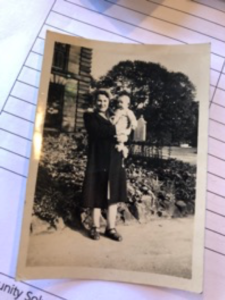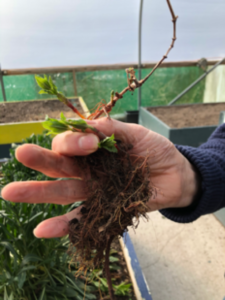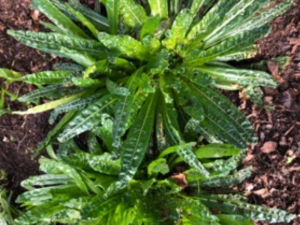Blog post number 12 from Claire Wellesley-Smith and the Local Colour group
Over the last four years the Local Colour project has been collating an archive related to local stories and the heritage of Elmfield Hall, Gatty Park where we meet each week. Now home to Community Solutions North West the story of how the building and grounds connects with the history of the local dyeing and printing industries feeds into creative work and the development of a community textile garden on site.
Since writing my last blog post documenting the development of my long-term artist residency ‘Local Colour’ everything about our daily life has changed as a result of Covid-19 and social distancing measures. What does this mean for a hands-on engagement that works directly with people every week?
On 13th March the Covid-19 pandemic was already changing some of my working patterns, conference papers part-written put to one side as events began to be postponed indefinitely, summer teaching jobs paused. I travelled over to Accrington for the usual Friday morning session at Community Solutions mindful that things might be about to change dramatically for the group. The session was well-attended, and we began with our observations around things we had seen and done that week. Changes to our everyday were apparent, several mentions of handwashing were included, panic buying and jokey asides about toilet roll. But our chat was much as it always is: talking about the weather, a discovery in the local library of a letter related to the Gatty Park centenary this June, a baby photograph of a participant’s grandmother taken outside Elmfield Hall in 1949 passed around the table.

Gatty Park, 1949
Our session was the first in the garden this year working with the beds set up for dye plants. The walk up to the polytunnel revealed spring growth appearing everywhere, and glorious sunshine. We weeded the madder bed and added some new plants to an outside bed, dug out stray roots, and sowed seeds, including sunflowers, dyers’s chamomile and coreopsis. We went back inside, chatted over tea and said our goodbyes until next week.

Replanting our madder plants, 13.03.20
The next contact I had with the participants was in phone and email conversations about our newly changed project, a community engagement unable to meet face-to-face for the foreseeable future. A rapid rethink in times of uncertainty and upheaval for all is hard to do. Exploring ideas around virtual community-based learning in times of quarantine and social distancing is difficult when this was never part of the plan. However, some good conversations with SSW and other practitioners helped me to plan a weekly virtual engagement with some of the group members via zoom. The first session was an opportunity to talk about what a new, physically distant, format could offer everyone. The requests from the participants were as follows: we can have a social chat and share a little of our new every day; we can be kept informed of any news about our project and its funding; we can think of ways to get others involved at this time; we can share ideas and the creative work we might be doing at home; we can revisit some of the stories we’ve found through our research to date; we can think about how we work together in the future.
Thinking back to our work in the garden on the 13th March I am heartened by the fact that things will continue to grow and may even flourish unchecked during our absence. The current crisis offers huge challenges for projects like ours, but I am hoping that a reflexive approach to being together apart will still mean an opportunity for meaningful engagement.

Weld, flourishing in the dye garden 13.03.20





